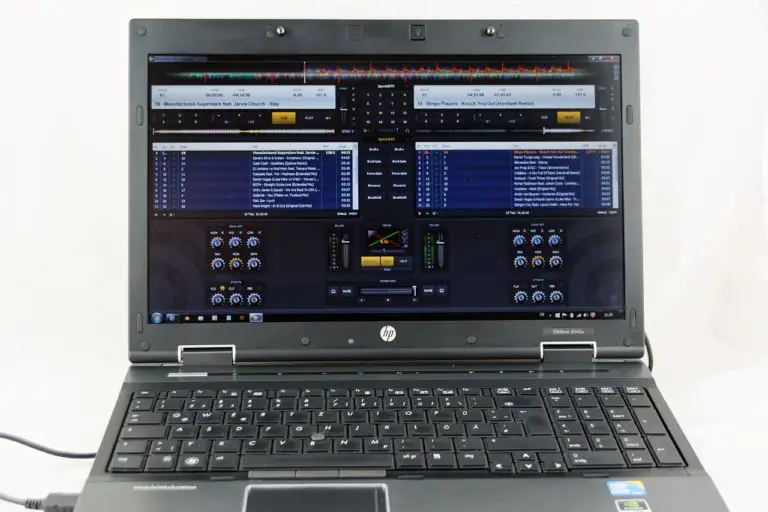Are Flexi Discs Any Good?
Flexi discs, also known as flexi records or phonosheet, are vinyl records made from a thin, flexible material, like polyethylene. They were first introduced in the 1940s to produce low-cost, disposable records that could be included in magazines and newspapers. However, despite their initial popularity, Flexi discs have largely fallen out of use in recent years. So, are flexi discs any good?
The answer is Yes, but not as good as vinyl records. Flexi Discs are great due to their low cost and ease of production, portability, and durability.
It’s important to remember that flexi discs are not a replacement for traditional vinyl records. Because of their limited sound quality and lack of collectability, flexi discs are generally not considered as good as vinyl records. If you are looking to produce high-quality physical copies of your music, vinyl records are still the best option.
Advantages of flexi discs
Cheap production
One of the biggest advantages of Flexi discs is their low cost and cheap production. Because they are made from a flexible material, Flexi discs can be easily mass-produced. This makes them an affordable option for record labels and musicians. Additionally, Flexi discs can be easily cut to any size or shape, allowing for creative and unique packaging options.
Flexi discs are made from sheets of PVC or resin-coated cardboard. When most of your materials are cheap plastic or cardboard, you can imagine how they might appeal to manufacturers.
Durability
Another advantage is their portability and durability. Because they are made from a flexible material, Flexi discs are much more durable than traditional vinyl records.
Unlike vinyl, they are less likely to shatter when you drop them. That flexible material gives a “bend but don’t break” feel to these flexible records.
They are less susceptible to damage from scratches, dings, and other forms of wear and tear. This makes them a great option for musicians who want to produce physical copies of their music. Since they can withstand the rigors of touring and other forms of transportation.
Lightweight
Flexi discs often weighed less than the packaging that they were placed in. At five grams, you could easily ship a large quantity of them with limited expense.
Because of this, you could place them inside cereal boxes and other items without impacting the weight. This made them into great promotional tools where weight was a factor.
Disadvantages of flexi discs
Low sound quality
One of the biggest drawbacks of these discs is their limited sound quality. Because they are made from a flexible material, Flexi discs are not as rigid as traditional vinyl records, which can result in a lower-quality sound.
This can be particularly noticeable in the low-end frequencies, which can sometimes sound distorted or muffled on Flexi discs.
Limited Availability
Another disadvantage of Flexi discs is their limited availability. Because they are not as popular as traditional vinyl records, they can be more difficult to find in record stores and online. Additionally, because they are not as widely used, there may be fewer options for purchasing and playing them, making them less accessible for fans and collectors.
Less valuable
Flexi discs are generally considered less valuable than traditional vinyl records in collectability. Because they are not as widely used and are less durable, they are generally not as sought-after by collectors and audiophiles.
The materials used in creating these discs are made from material that deteriorates quickly. Cardboard, in particular, is bad about maintaining itself when wet. Anything that deteriorates fast isn’t known for its strong collector value.
Why did music companies rely on flexi discs?
Promotion
One potential use for Flexi discs is as a promotional tool. Because they are inexpensive and easy to produce, they can be a great way to distribute samples of your music to potential fans or industry professionals.
Additionally, because they are durable and portable, flexi discs can be a great option for touring musicians who want to distribute physical copies of their music to fans at live shows.
Collection
Despite their long-term issues, flexi discs we’re still considered a collector’s item. Bands like the Foo Fighters and musicians like Jack White have relied on limited-edition releases using the audio medium.
Because there are few musicians that use them (for the reasons listed above), they are considered an oddity. The limited release of these products can make them incredibly rare, sometimes costing thousands of dollars.
The history of flexi discs
Flexi discs were popular in the 1960s and 1970s as a way to cheaply and efficiently distribute music to a wide audience. They were often included as inserts in magazines, newspapers, and other publications and used as promotional items by record labels.
Their history can be traced back to the early 20th century when the gramophone record was invented. They didn’t start gaining popularity as a means of music distribution till the 1950s and 1960s.
Their advantages (see above) made them an attractive option for record labels and other music distributors, who could produce large quantities of flexi discs at a fraction of the cost of traditional records.
One of the earliest and most notable uses of flexi discs was in the British music magazine “New Musical Express” (NME). In the early 1960s, NME began including flexi discs as inserts in the magazine, which featured exclusive songs and interviews with popular artists. This helped establish flexi discs as a popular way to distribute music and further popularized them in the following years.
Interesting facts about flexi discs
Flexi discs were also commonly used as promotional items by record labels. They were often included in record store displays and given away as freebies at concerts and other events. This helped to increase the exposure and popularity of the featured artists and records.
Flexi discs were produced in a wide range of sizes and designs, from small, round discs to large, rectangular ones. Some flexi discs were shaped like the artist or band featured on the disc. The most common size of flexi discs is 7 inches in diameter, but they could be produced in other sizes as well.
Flexi discs were primarily produced in monaural format, meaning the sound is in one channel and not stereo. This was the standard format of flexi discs in the 1960s and 1970s.
Flexi discs are not commonly used today, as digital music formats have replaced them as the primary way to distribute music. However, they can still be found in some niche markets and are considered a collectible items by some music enthusiasts.
Do any companies make flexi discs today?
Going back to 2010, a company named Pirates Press built its own flexi disc press. An employee of the company, Matt Jones, has been working to revive the format.
He went as far as to track down the last creators, Eva-Tone, to ask them if they still had the machines. Unfortunately, they sold the machines for scrap some time ago.
Despite this, they were able to look up the original patents online. Using the information from these patents, Pirates Press made their own discs.
Their first client, Decibel, happened to be a metal magazine. They include exclusive discs in each release of the magazine, a practice that still goes on today.
Conclusion
Much like vinyl, “flexi” is a format that died and made a return. Despite being destroyed in sales by digital music, compact discs, and cassettes, they have a lot of nostalgia.
Their cheap production costs make them an attractive alternative to standard vinyl records. But, musicians don’t tend to rely on them as a regular medium because of this cheap production. It tends to ruin the collector’s value, which is a big deal to those who like vinyl formats.
Still, you can get exclusive flexi discs with Decibel magazine these days. So even if the format is not as popular as others, it still holds a strong place in music history.









